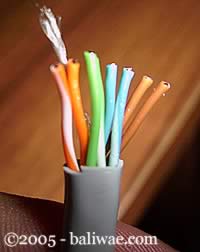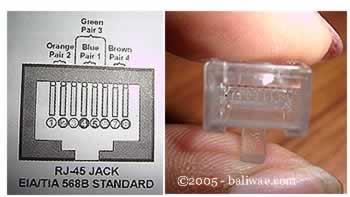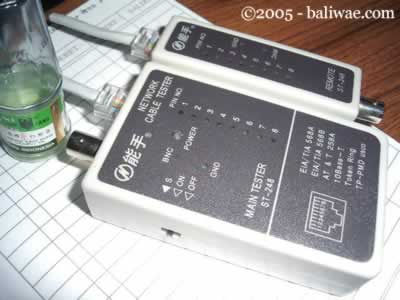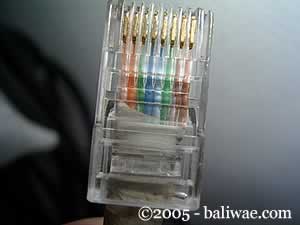by Tracy V. Wilson and Ryan Johnson
Browse the article How Motherboards Work
Introduction to How Motherboards Work
Computer Hardware Image Gallery
Intel motherboardCourtesy Amazon
The Intel Desktop Board D915PGN. See more computer hardware pictures.
If you've ever taken the case off of a computer, you've seen the one piece of equipment that ties everything together -- the motherboard. A motherboard allows all the parts of your computer to receive power and communicate with one another.
Motherboards have come a long way in the last twenty years. The first motherboards held very few actual components. The first IBM PC motherboard had only a processor and card slots. Users plugged components like floppy drive controllers and memory into the slots.
More on Computers
* Microprocessors
* How RAM Works
* TreeHugger.com: Intel's New Nehalem CPU
Today, motherboards typically boast a wide variety of built-in features, and they directly affect a computer's capabilities and potential for upgrades.
In this article, we'll look at the general components of a motherboard. Then, we'll closely examine five points that dramatically affect what a computer can do.
Form Factor
motherboard
Photo courtesy Consumer Guide Products
A modern motherboard.
A motherboard by itself is useless, but a computer has to have one to operate. The motherboard's main job is to hold the computer's microprocessor chip and let everything else connect to it. Everything that runs the computer or enhances its performance is either part of the motherboard or plugs into it via a slot or port.
The shape and layout of a motherboard is called the form factor. The form factor affects where individual components go and the shape of the computer's case. There are several specific form factors that most PC motherboards use so that they can all fit in standard cases. For a comparison of form factors, past and present, check out Motherboards.org.
The form factor is just one of the many standards that apply to motherboards. Some of the other standards include:
* The socket for the microprocessor determines what kind of Central Processing Unit (CPU) the motherboard uses.
* The chipset is part of the motherboard's logic system and is usually made of two parts -- the northbridge and the southbridge. These two "bridges" connect the CPU to other parts of the computer.
* The Basic Input/Output System (BIOS) chip controls the most basic functions of the computer and performs a self-test every time you turn it on. Some systems feature dual BIOS, which provides a backup in case one fails or in case of error during updating.
* The real time clock chip is a battery-operated chip that maintains basic settings and the system time.
The slots and ports found on a motherboard include:
* Peripheral Component Interconnect (PCI)- connections for video, sound and video capture cards, as well as network cards
* Accelerated Graphics Port (AGP) - dedicated port for video cards.
* Integrated Drive Electronics (IDE) - interfaces for the hard drives
* Universal Serial Bus or FireWire - external peripherals
* Memory slots
motherboard socket
Photo courtesy Consumer Guide Products
A Socket 754 motherboard
Some motherboards also incorporate newer technological advances:
* Redundant Array of Independent Discs (RAID) controllers allow the computer to recognize multiple drives as one drive.
* PCI Express is a newer protocol that acts more like a network than a bus. It can eliminate the need for other ports, including the AGP port.
* Rather than relying on plug-in cards, some motherboards have on-board sound, networking, video or other peripheral support.
Many people think of the CPU as one of the most important parts of a computer. We'll look at how it affects the rest of the computer in the next section.
Sockets and CPUs
motherboard socket
Photo courtesy HowStuffWorks Shopper
A Socket 939 motherboard
The CPU is the first thing that comes to mind when many people think about a computer's speed and performance. The faster the processor, the faster the computer can think. In the early days of PC computers, all processors had the same set of pins that would connect the CPU to the motherboard, called the Pin Grid Array (PGA). These pins fit into a socket layout called Socket 7. This meant that any processor would fit into any motherboard.
Today, however, CPU manufacturers Intel and AMD use a variety of PGAs, none of which fit into Socket 7. As microprocessors advance, they need more and more pins, both to handle new features and to provide more and more power to the chip.
Current socket arrangements are often named for the number of pins in the PGA. Commonly used sockets are:
* Socket 478 - for older Pentium and Celeron processors
* Socket 754 - for AMD Sempron and some AMD Athlon processors
* Socket 939 - for newer and faster AMD Athlon processors
* Socket AM2 - for the newest AMD Athlon processors
* Socket A - for older AMD Athlon processors
motherboard lga
Photo courtesy HowStuffWorks Shopper
A Socket LGA755 motherboard
The newest Intel CPU does not have a PGA. It has an LGA, also known as Socket T. LGA stands for Land Grid Array. An LGA is different from a PGA in that the pins are actually part of the socket, not the CPU.
Anyone who already has a specific CPU in mind should select a motherboard based on that CPU. For example, if you want to use one of the new multi-core chips made by Intel or AMD, you will need to select a motherboard with the correct socket for those chips. CPUs simply will not fit into sockets that don't match their PGA.
The CPU communicates with other elements of the motherboard through a chipset. We'll look at the chipset in more detail next.
Chipsets
motherboard bridges
Photo courtesy HowStuffWorks Shopper
The northbridge and southbridge
The chipset is the "glue" that connects the microprocessor to the rest of the motherboard and therefore to the rest of the computer. On a PC, it consists of two basic parts -- the northbridge and the southbridge. All of the various components of the computer communicate with the CPU through the chipset.
The northbridge connects directly to the processor via the front side bus (FSB). A memory controller is located on the northbridge, which gives the CPU fast access to the memory. The northbridge also connects to the AGP or PCI Express bus and to the memory itself.
The southbridge is slower than the northbridge, and information from the CPU has to go through the northbridge before reaching the southbridge. Other busses connect the southbridge to the PCI bus, the USB ports and the IDE or SATA hard disk connections.
Chipset selection and CPU selection go hand in hand, because manufacturers optimize chipsets to work with specific CPUs. The chipset is an integrated part of the motherboard, so it cannot be removed or upgraded. This means that not only must the motherboard's socket fit the CPU, the motherboard's chipset must work optimally with the CPU.
Next, we'll look at busses, which, like the chipset, carry information from place to place.
Bus Speed
bus speed
Busses connect different parts of the motherboard to one another
A bus is simply a circuit that connects one part of the motherboard to another. The more data a bus can handle at one time, the faster it allows information to travel. The speed of the bus, measured in megahertz (MHz), refers to how much data can move across the bus simultaneously.
Bus speed usually refers to the speed of the front side bus (FSB), which connects the CPU to the northbridge. FSB speeds can range from 66 MHz to over 800 MHz. Since the CPU reaches the memory controller though the northbridge, FSB speed can dramatically affect a computer's performance.
Here are some of the other busses found on a motherboard:
* The back side bus connects the CPU with the level 2 (L2) cache, also known as secondary or external cache. The processor determines the speed of the back side bus.
* The memory bus connects the northbridge to the memory.
* The IDE or ATA bus connects the southbridge to the disk drives.
* The AGP bus connects the video card to the memory and the CPU. The speed of the AGP bus is usually 66 MHz.
* The PCI bus connects PCI slots to the southbridge. On most systems, the speed of the PCI bus is 33 MHz. Also compatible with PCI is PCI Express, which is much faster than PCI but is still compatible with current software and operating systems. PCI Express is likely to replace both PCI and AGP busses.
The faster a computer's bus speed, the faster it will operate -- to a point. A fast bus speed cannot make up for a slow processor or chipset.
Now let's look at memory and how it affects the motherboard's speed.
Memory and Other Features
RAM Memory
For information about different types of RAM, check out How RAM Works.
We've established that the speed of the processor itself controls how quickly a computer thinks. The speed of the chipset and busses controls how quickly it can communicate with other parts of the computer. The speed of the RAM connection directly controls how fast the computer can access instructions and data, and therefore has a big effect on system performance. A fast processor with slow RAM is going nowhere.
The amount of memory available also controls how much data the computer can have readily available. RAM makes up the bulk of a computer's memory. The general rule of thumb is the more RAM the computer has, the better.
motherboard dimm
Photo courtesy HowStuffWorks Shopper
184-pin DDR DIMM RAM
Much of the memory available today is dual data rate (DDR) memory. This means that the memory can transmit data twice per cycle instead of once, which makes the memory faster. Also, most motherboards have space for multiple memory chips, and on newer motherboards, they often connect to the northbridge via a dual bus instead of a single bus. This further reduces the amount of time it takes for the processor to get information from the memory.
200-pin DDR SODIMM RAM
Photo courtesy HowStuffWorks Shopper
200-pin DDR SODIMM RAM
A motherboard's memory slots directly affect what kind and how much memory is supported. Just like other components, the memory plugs into the slot via a series of pins. The memory module must have the right number of pins to fit into the slot on the motherboard.
simm
Photo courtesy HowStuffWorks Shopper
64MB SDRAM SIMM
In the earliest days of motherboards, virtually everything other than the processor came on a card that plugged into the board. Now, motherboards feature a variety of onboard accessories such as LAN support, video, sound support and RAID controllers.
Motherboards with all the bells and whistles are convenient and simple to install. There are motherboards that have everything you need to create a complete computer -- all you do is stick the motherboard in a case and add a hard disk, a CD drive and a power supply. You have a completely operational computer on a single board.
For many average users, these built-in features provide ample support for video and sound. For avid gamers and people who do high-intensity graphic or computer-aided design (CAD) work, however, separate video cards provide much better performance.
For more information on motherboards and related topics, check out the links on the following page.










































